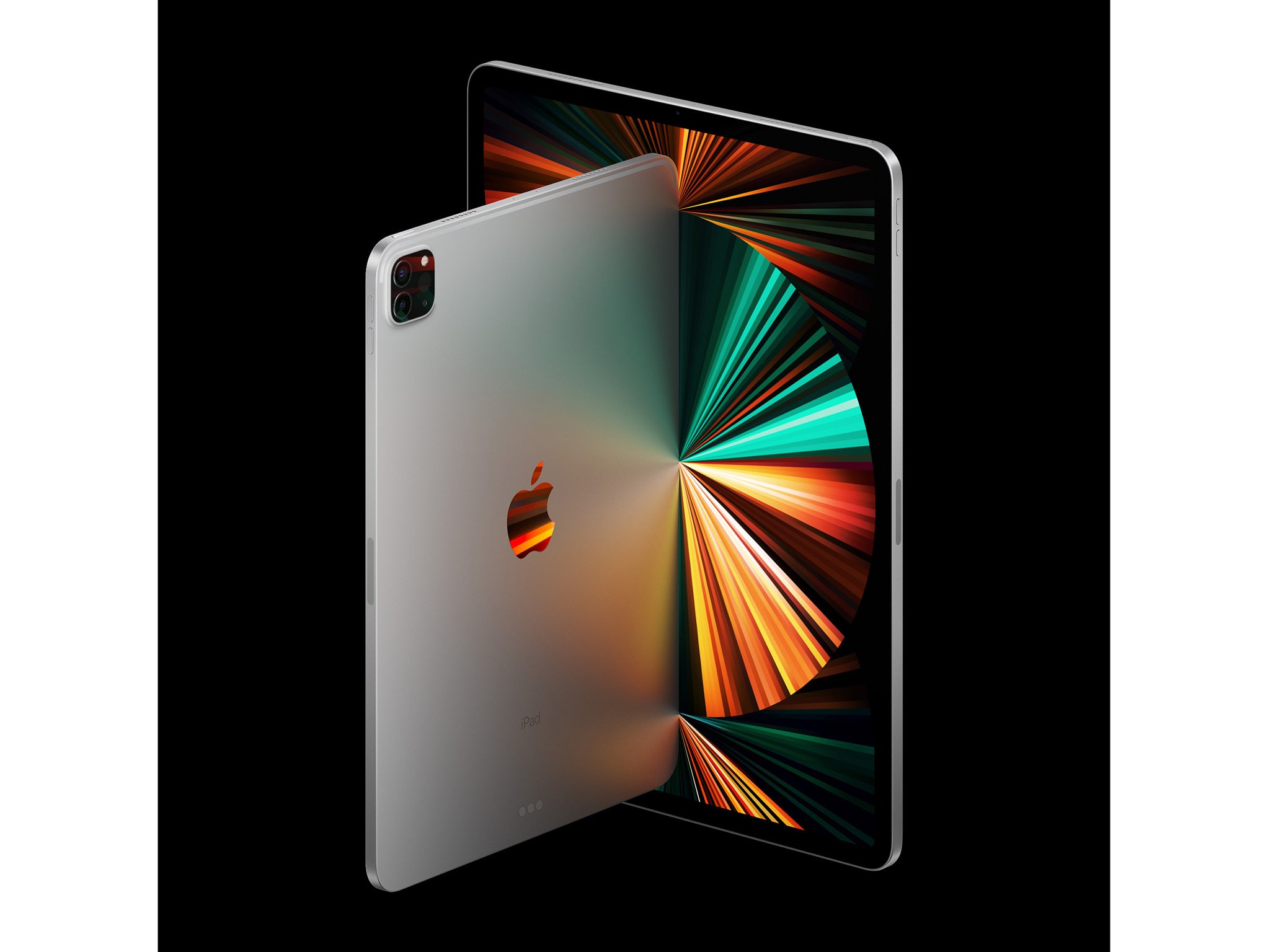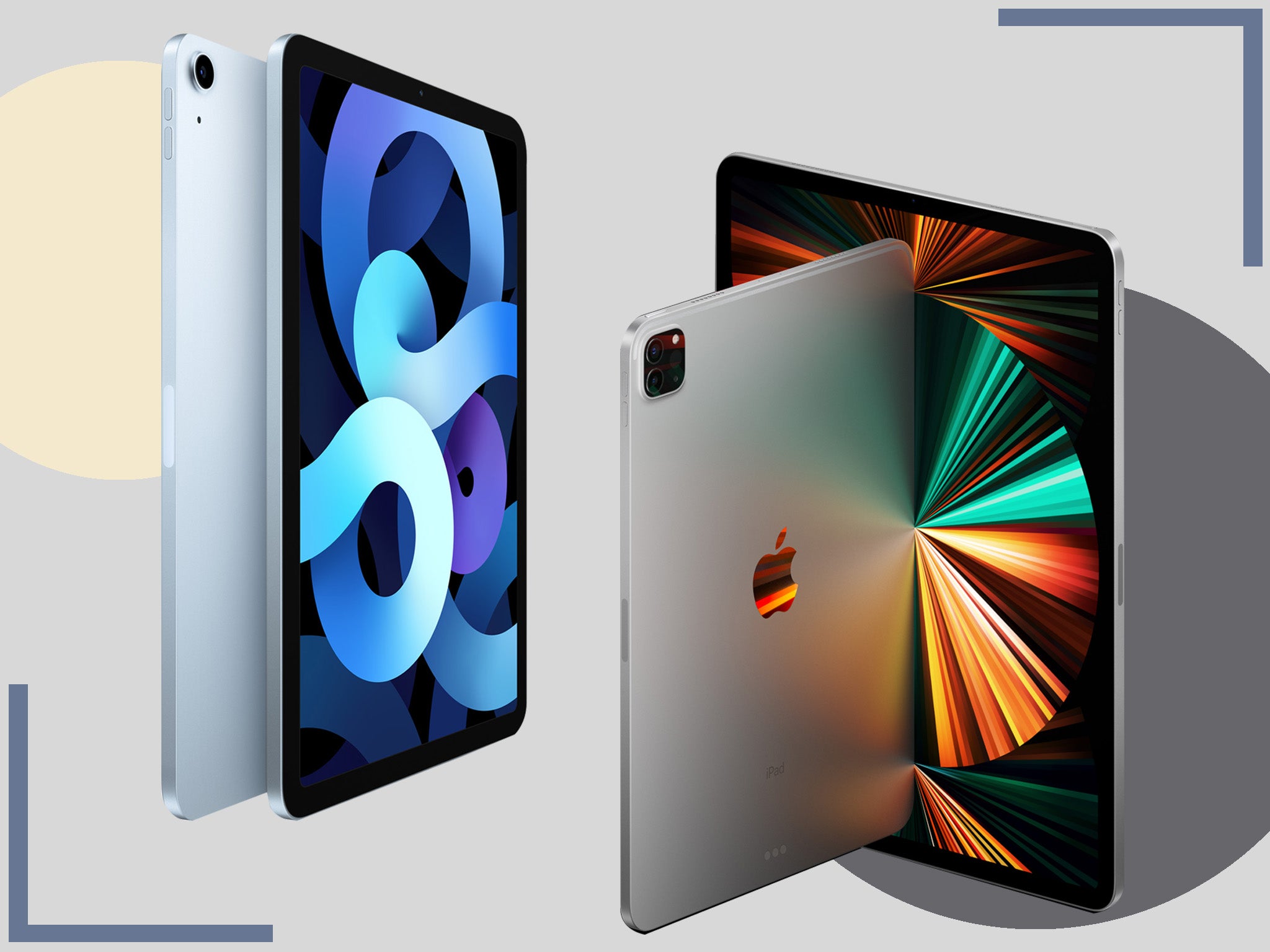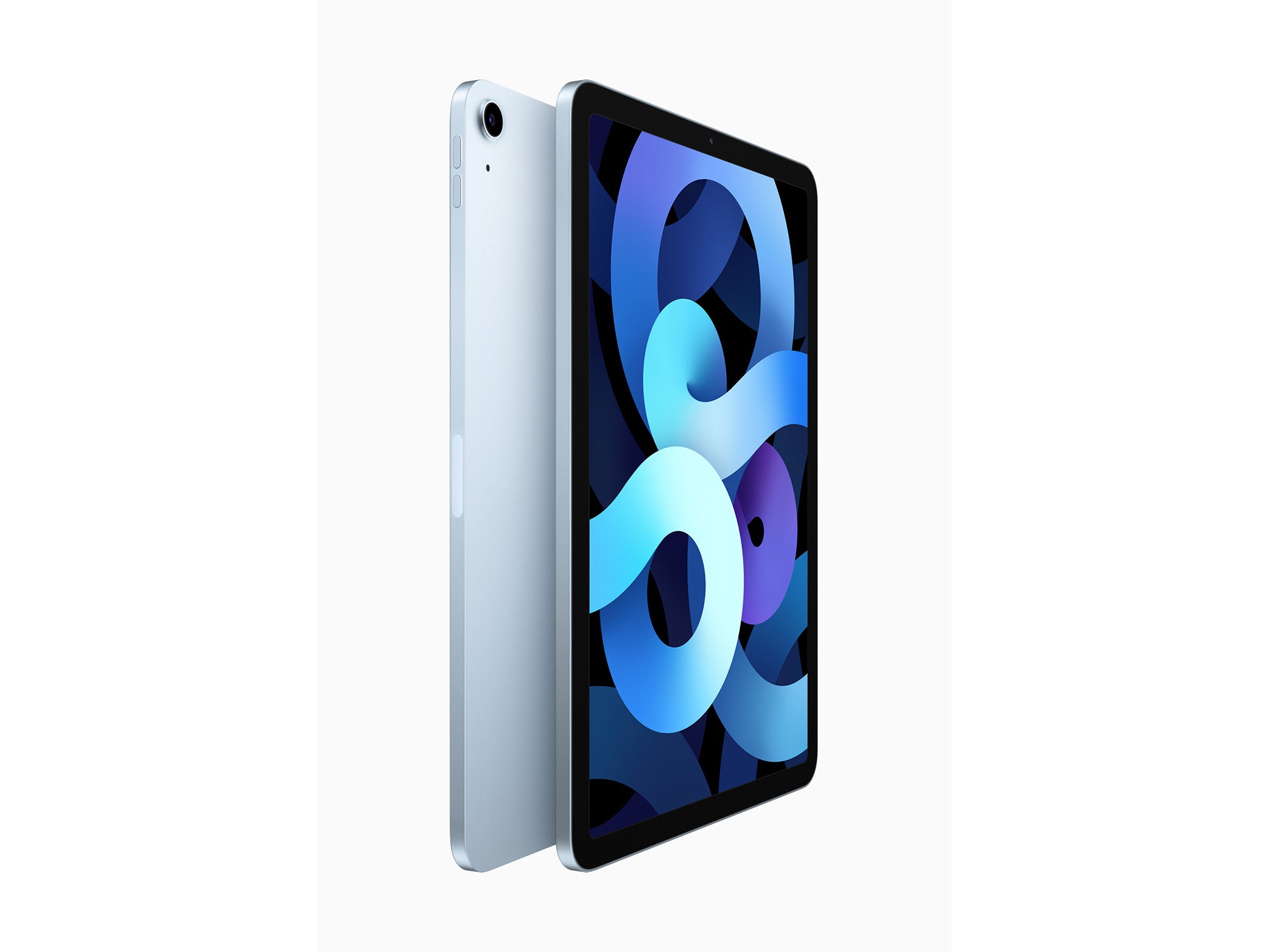Apple iPad pro 2021

Buy now £749, Apple.com
Screen: 11in LCD or 12.9in liquid retina XDR
Security system: Face ID
Processor: Apple M1
Connectivity: USB-C Thunderbolt
Compatibility: Apple Pencil 2nd generation, magic keyboard
Storage: 128GB, 256GB, 512GB, 1TB or 2TB
Colours: Space grey or silver
Price: 11in from £749 with wifi or from £899 with wifi and cellular; 12.9in from £999 with wifi, from £1,149 with wifi and cellular
The new iPad is not only the fastest and most powerful tablet you’ll come across, it also outdoes most laptops – even high-end ones. The pro has the best of everything Apple makes, hence the premium pricing.
For a start, there’s the M1 processor which is also found in the Apple MacBook pro: putting a top-notch PC performance chip in a tablet is unheard of. The iPad air is also really fast, thanks to its A14 Bionic chip also found in the latest iPhones, but the increase in power on the iPad pro is a real step-change. That said, much of the time you may not notice the difference, as the air is fast enough for most situations. It’s when you’re running really power-hungry applications that the pro comes into its own. Apps such as those that provide video editing, where the iPad pro can work with multiple super-high-resolution video files simultaneously with no delay or slowdown, are particularly impressive.
One place where you will notice the difference is the display. LCD screens usually have just one backlight, occasionally a few more than that. This means that black shades are rarely blacker than dark grey, because the wash of the backlight is visible. Apple’s displays have always been good at disguising this, but the new liquid retina XDR screen here – on the 12.9in iPad pro only – is phenomenal.
That’s because it has more than 10,000 tiny backlights using a technology called miniLED. These LEDs can be controlled as 2,500 locally dimmed zones. This means the dark areas of the screen are truly deep blacks, so those black bars when you’re watching a letterboxed movie disappear altogether, while colours are bright and punchy. It also offers amazing brightness, which helps the screen look even more eye popping.
The 11in model has the same screen as last year’s iPad pro, that is, a highly effective LCD screen. It still outdoes the display on the iPad air in several ways. First, it’s that little bit bigger, measuring 11in instead of the air’s 10.9in. It also has “ProMotion”, which means it dynamically adjusts the refresh rate of the screen as needed. This means scrolling through menus, screens or anything else looks especially smooth, for instance, but a lower refresh rate will be implemented when it’s not needed, saving battery life.
The liquid retina XDR display is the only difference between the 11in and 12.9in iPad pros, apart from the physical size difference and price tag.
Then there’s Face ID, the super secure and intimate way to unlock your device just by looking at it, which the air doesn’t have. It also has even thinner bezels around the display than other tablets, which explains why the pro 11in screen fits exactly the same space as the air with its 10.9in one. Still, the air, as we’ll see below, has a great alternative to Face ID.
The iPad pro upgrades the connectivity of the tablet. Both the air and pro have a USB-C connector, but on the pro models it’s a Thunderbolt connection, which is faster. This means that if you’re a professional photographer, for instance, you can transfer big photographic files to or from the tablet more quickly.
We’ve all been doing more video-conferencing than we would have liked recently, and Apple is at least aiming to make this a more enjoyable experience. It’s replaced the wide-angle lens on the front of the iPad pro with an ultra-wide one. This works with the M1 processor in a feature called “centre stage”. The camera zooms in on you, wherever in the frame you are, and if you move around the room it pans intelligently to ensure you stay the centre of attention.
Then there’s 5G. This is the first 5G-capable tablet, assuming you buy the wifi plus cellular option. It means that not only do you have the versatility to connect to the internet away from a wifi network, but if it’s a strong 5G signal, it’ll be extremely fast, and more secure than some wifi. We tested the iPad pro using the EE network and the results, in London, ranged from decent to phenomenally fast.
There are two rear cameras on the iPad pro. Though a large, flat slab of glass and aluminium does not make for an ergonomic camera, the large display does make for a great viewfinder.
There’s also a LiDAR scanner, which helps improve photography by grabbing depth information very quickly. LiDAR is also used in augmented reality apps, and on the iPad pro an updated app called Clips lets you create videos with impressive special effects.

